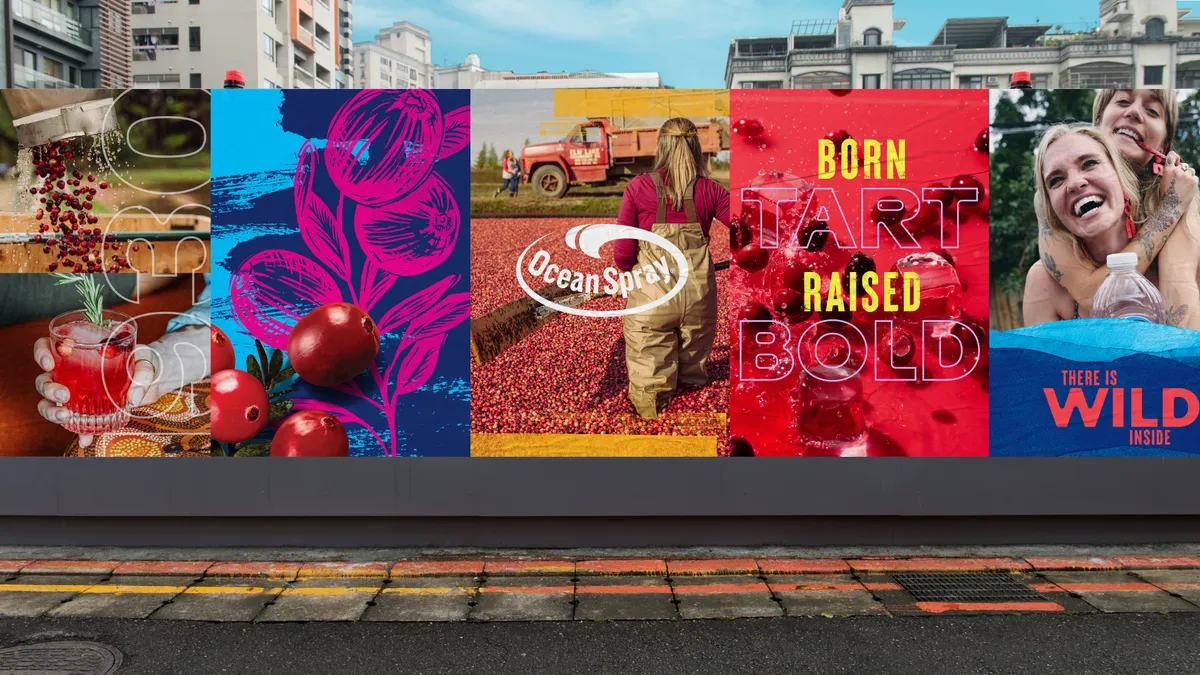Dive Brief:
- Four of out five of millennial-age baseball fans use their mobile device as part of attending a live game, compared with 38% of adults 55 and older, according to Nielsen Sports data cited by MediaPost. Devoted baseball fans are more likely than most to use their smartphones to connect with friends and family, check fantasy league standings and browse for sports information while at a game.
- Fans also converse through social media about the Home Run Derby, the annual home-run hitting contest customarily held before the All-Star Game, which will be held at Marlins Park in Miami this year. In 2016, there were 306,000 tweets about the Home Run Derby sent by 138,000 people in the U.S. and 370,000 tweets about the All-Star Game sent by 154,000 people, according to Nielsen.
- The research found that fans associate the word "traditional" with MLB more than with other sports. "American" is the most popular attribute fans used to describe baseball, followed by "traditional," "family oriented," "entertaining" and "fun."
Dive Insight:
Live game attendance is something of a bright spot for the MLB, which has experienced significant TV ratings declines as younger consumers head to other channels. In comparison, last season was the league's 11th-highest year for game attendance despite a 1.1% drop. In this light, the Nielsen numbers suggest that major brand sponsors have an opportunity to get in front of millennial audiences by engaging with them on their mobile phones while they are at a game with contextually relevant messaging and comes as many stadiums have been upgrading their in-venue mobile services.
Earlier this year, the NBA Cavaliers debuted an AR app called Deep in the Q that allows fans to play against each other virtually during games at the Quicken Loans Arena in Cleveland. The app was sponsored by Bud Light.
This research on mobile viewing habits of millennials comes just as Major League Baseball prepares for the All-Star Game on July 11. Nielsen Sports is paying attention to this event at a time when fewer than normal are. Last year, the TV ratings for the game plummeted 20% from 2015 to a record low of 8.71 million viewers. It was the first time Nielsen ever tracked an audience of less than 10 million in the 50 years the company has monitored game viewership, Ad Age reported.
Also distressing for MLB and other professional sports organizations is the aging demographic of their audiences. The All-Star Game's audience had a median age of 54.6 years, while 30% of the audience was between the ages of 18 and 49 last year. The median age of MLB viewers rose to 57 last year from 52 in 2000, according to Nielsen data cited by Sports Business Daily. The median age of a National Football League viewer rose to 50 from 44 in the same period.
Given the graying of the audience and the declines in viewership, it could signal that sports leagues need to embrace mobile media to stay relevant among a younger audience that's more likely to be looking at a cell phone than watching live sports. In some cases, millennial sports fans are tuning in to video game tournaments and other eSports activities, according to a study this year from L.E.K. Consulting. MLB has begun to experiment with interactive and immersive viewing experiences, such as its rolling out of in-app virtual reality (VR) features to accompany live-streaming broadcasts using Google's Daydream headset and an Android smartphone.
In addition to testing out new technologies like VR, the league is looking at ways to reach audiences via social media. In May, MLB and Facebook announced a live-streaming deal in which the social network will broadcast 20 free games — or one game a week — this season. That follows the MLB's 2016 deal with Twitter to live-stream games. While VR may not reach more than a niche audience as of now, MLB recognizes that it needs to adopt emerging technologies and adapt to fans' habits and preferences.










